Orana Park
The Alf. Duguid Memorial Park was situated in Queen Street Campbelltown and had been gifted to the Campbelltown Kangaroo Rugby League Club by the Duguid family (probably in the 1940s) but in 1953 the Club went into negotiations with Council to take over the grounds to develop them for the general sporting activities of the people of Campbelltown. This was eventually finalised in 1954. In 1955 the Leumeah Progress Association lobbied for its own park, which resulted in the allocation of about 12 acres which the Progress Association requested be named "Orana Park". It was developed as a rudimentary sporting field, and the move to Orana Park by the Campbelltown Kangaroos would not happen until 1971, when the Alf. Duguid Memorial Ground was being considered for redevelopment. Orana Park ultimately became Campbelltown Stadium. The grandstand there is named the Alf Duguid Memorial Stand. The establishment of Minto football team playing at Duguid oval, below.
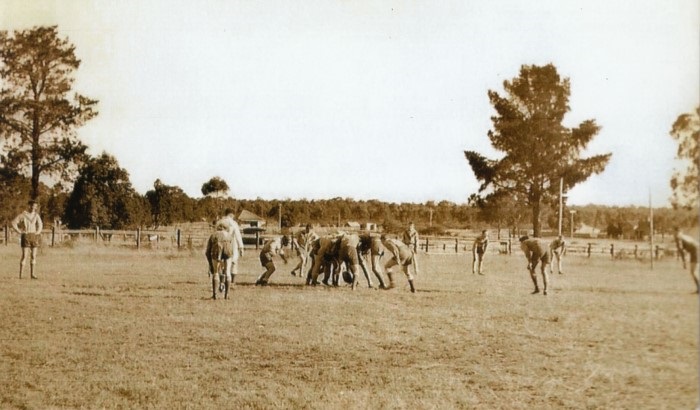
(Images sourced from Gary Monkley Collection, Campbelltown City Library)
Campbelltown Sports Stadium - Aerial view
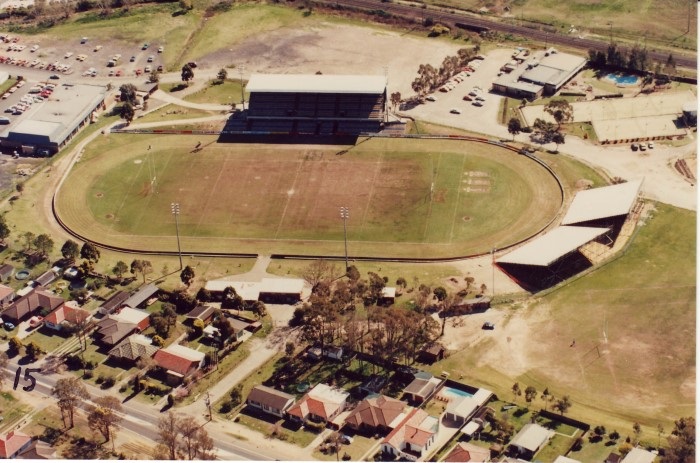
(Image sourced from Campbelltown City Library)
New Schools
The 1950s saw unprecedented growth in the number of schools in the Campbelltown district. Expansion of Campbelltown Public, plans for Campbelltown North and East Primary Schools, establishment of Leumeah Infants school and Macquarie Fields Public School, and a new Minto Public School were among those servicing the rapidly growing area.
Kindergarten & 1st Class, Minto Public School, 1957.
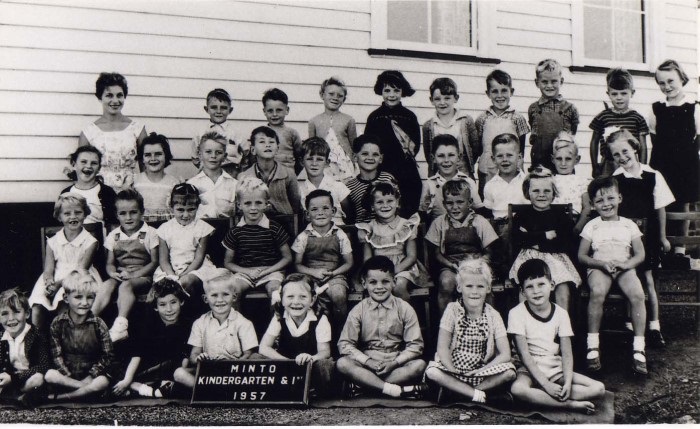
(Image sourced from Follan Collection, Campbelltown City Library)
The establishment of Campbelltown High School was at last announced in 1953, but for the first two years pupils travelled to Liverpool pending the completion of school buildings. Prior to this, pupils finishing their primary education had to travel long distances to secondary schools such as Parramatta High, Granville Technical, and Homebush High. In 1956 Campbelltown High School opened in buildings in Rudd Road (now Beverley Road), Campbelltown. This nucleus of the proposed school consisted of four and one half blocks. The first block had been completed at the beginning of 1955. The Science, home Economics, Manual Training blocks and the half block containing the Drawing room and Classroom were almost completed for the opening of the school in 1956.
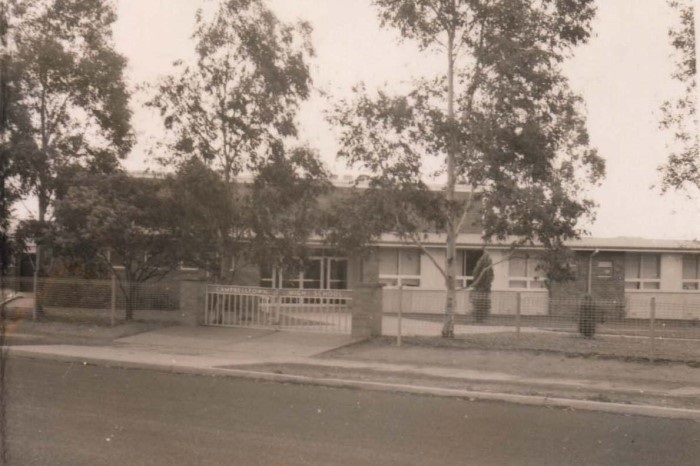
(Image sourced from Credit Campbelltown City Library, Local Studies Collection)
Still a country town
Campbelltown was still a country town surrounded by cow-dotted hills. This snap was taken from Kenny Hill, looking east, in 1958.

(Image sourced from Nash Family Collection)
Relaxing after a "fox hunt" - using a scented bait - in the hills around Campbelltown in the late 1950s .
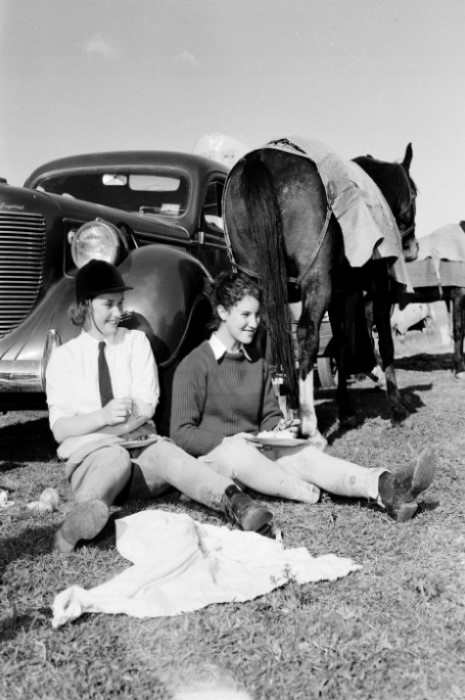
(Image sourced from Campbelltown-Macarthur Advertiser collection)
Queen Street
Queen St in late 1950s. Shopkeeper Phil Solomon left Campbelltown and sold his premises to three brothers who redeveloped it as Downes Department Store. Local youngster John Hepher described it as "the weirdest collection of rustic (and rusty) buildings. All linked up with a series of stairs and corridors, and as they expanded, they enveloped the buildings around them.
Campbelltown Theatre
Some of the early theatrical performances of the 1950s that led to the creation of Campbelltown Theatre Group in 1956.
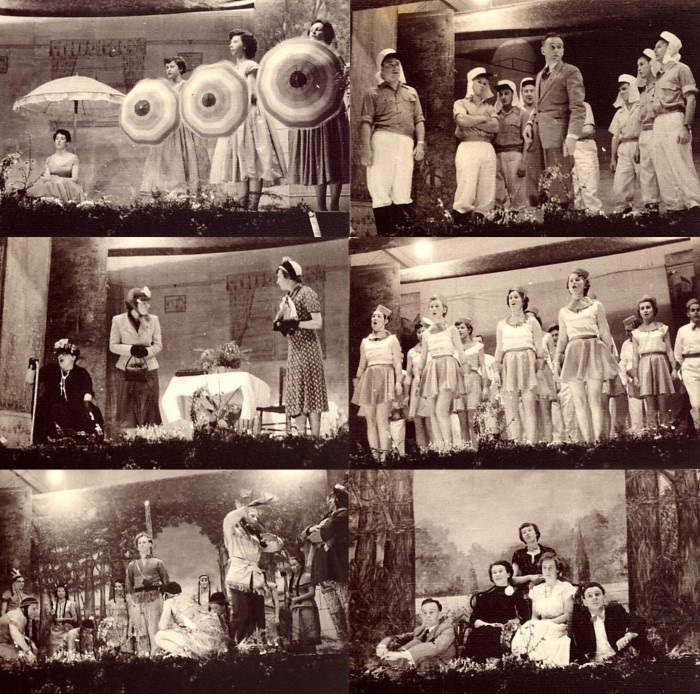
(Image sourced from Henson Family Collection)
Emily Cottage
Emily Cottage(PDF, 202KB), Fishers Ghost Creek, and surrounds, as shot by Arnold McGill in the early 1950s.

(Image sourced from McGill Family collection)